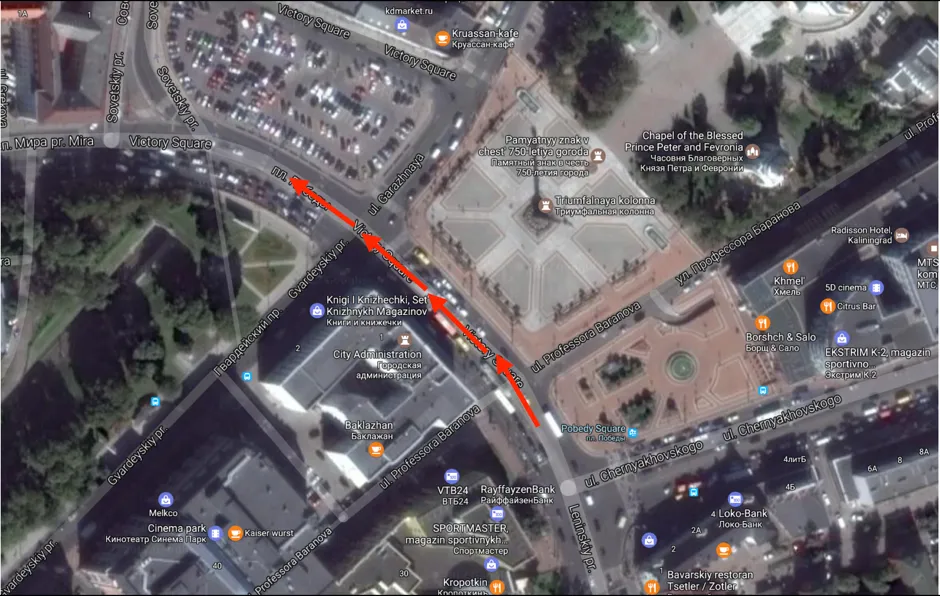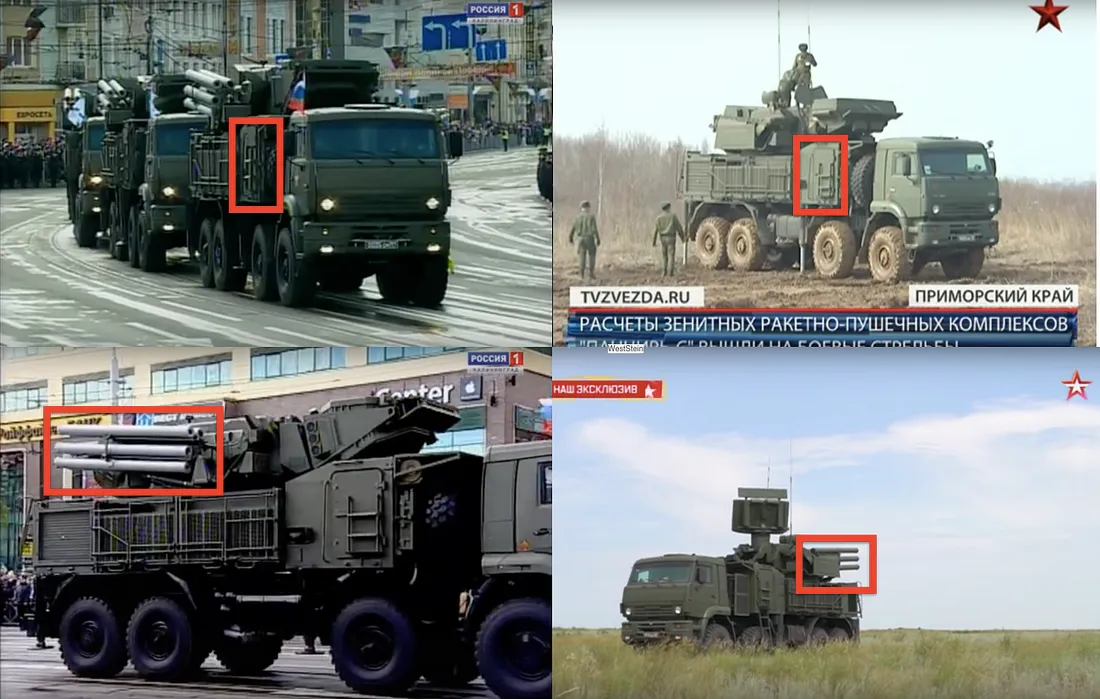Kaliningrad Air and Sea Defenses on Parade
Analyzing footage from the exclave’s Victory Day parade
Kaliningrad Air and Sea Defenses on Parade
Share this story

BANNER: Source: left, Vesti Kaliningrad / YouTube. Right, archive footage of Zvezda TV for comparison.
The Kaliningrad exclave is one of the Russian Federation’s most significant military areas due to its position between Poland and Lithuania. It is the center of an anti-access / area denial (A2/AD) zone of air and sea defenses which can reach across the central Baltic, thus information about the weapon systems and units involved is tightly controlled.
On May 9 — Soviet Victory Day — some of the exclave’s A2/AD weapon systems were put on display in the annual military parade and broadcasted in video footage published by the Vesti Kaliningrad program on YouTube.
The image below shows the direction of the parade.

The “Bal” coastal defense system is capable of firing eight “H-35” anti-ship missiles a distance of up to 120 kilometers with a three-second interval between volley firing. According to Russian state news outlet RIA Novosti, a Bal launcher can drive up to 850 kilometers on a single fuel tank, with a maximum speed of 60 km/h on the road, and 20 km/h off-road.

The Bastion coastal defense complex comes in two variants — static (Bastion-S) and mobile (Bastion-P). It can fire “Yahont” anti-ship missiles to a range of 300 kilometers (up to 120 kilometers if mixed trajectory). Again according to RIA Novosti, it takes 5 minutes for the complex to execute a command.

Anti-aircraft rocket-gun system Pantsir S1
According to website militaryarms.ru, the anti-aircraft rocket-gun system “Pantsir S1” is capable of neutralizing planes, helicopters, and cruise missiles at a range of 200 meters to 20 kilometers and an altitude of 5 meters to 15 kilometers.

Each vehicle has three locators aimed for early detection, targeting, and passive optical monitoring. The locators can monitor up to twenty targets simultaneously and fire at three targets at the same time.
S 400 Triumf
The S 400 Triumf anti-aircraft complex is Russia’s newest in-service anti-aircraft defense; according to RIA Novosti, it is capable of destroying targets at a range of over 250 kilometers at an altitude up to 27 kilometers. It can execute an attack on six simultaneous targets within three minutes of receiving the command.

The S-400 transporter-erector-launcher (TEL) system is known in four-axle and five-axle variants. As the image comparison above illustrates, at the parade in Kaliningrad four-axle vehicles were shown; other footage from Russian military sources, and the video shown below, portray the five-axle variant. The four-axle variant derives from the earlier S-300 P-series missile, also shown in the video.
According to Russian military blog BMPD, Russian S-400 systems were deployed in Syria “with the 5P85SM2–01 self-propelled launch unit on the old MZKT-543M special wheeled chassis,” in November 2015. Images accompanying the blog showed the four-axle configuration.
Conclusion
The Victory Day parade is an annual declaration of Russia’s military power in various regions. In Kaliningrad, that declaration is of particular interest given the increased tensions between Russia and NATO, and the presence of NATO forces in the Baltic States and Poland.
The Kaliningrad parade provides up-to-date imagery of the state of forces in the exclave, and especially their A2/AD elements.
This article was updated on May 17 at 1045 UTC to correct the range of the Pantsir S-1 and clarify the variants of the S-400 TELs. Thanks to @GuyPlopsky for pointing these out.

